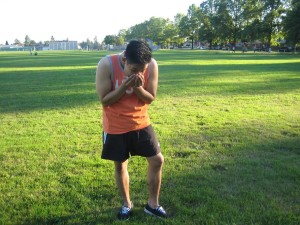It is important to note that indoor dust is comprised of small-sized particles of skin, hair, pollen, fibers and mold along with microscopic dust mites that are capable of triggering an allergic reaction in some individuals. Cleaning the house to eliminate the dust often results to the worsening of the allergy symptoms since more dust is breathed in during the cleaning process. The symptoms of a severe allergic reaction to dust typically include nasal issues, itchiness, asthma and disrupted sleep.
It is best to enroll in a class on first aid today so that you are prepared to carry out the appropriate steps in order to help ease the symptoms experienced by the individual upon exposure to dust.
Nasal issues

Being exposed to the airborne dust will irritate and inflame the nasal passages, resulting to issues with the nose. Constant sneezing is a usual symptom of dust allergy. Other symptoms include postnasal drip, runny nose and persistent nasal congestion. The swelling and pressure in the cheeks and nose occurs due to the inflammation in the nasal sinuses and passages are also symptoms of a severe allergic reaction to dust.
Itchiness
Once exposed to the allergen, it leads to itchiness where the dust came in contact with the body. The itchiness in the eyes can also occur after being exposed to dust while cleaning or walking in dirty areas. When the dust is breathed in, it will cause the nose, throat and roof of the mouth to itch and might even cause the sensation of a prickly throat. Take note that children who are allergic to dust or dust mites often brush or scratch in an upward manner on their noses.
Asthma
Individuals who have dust allergies and asthma often suffer from the manifestation of asthma symptoms due to exposure to dust. Remember that dust is a usual trigger of the asthma symptoms including coughing and wheezing as well as chest tightness and shortness of breath. Regular exposure to dust mites is also a common cause of the asthma symptoms among children. The dust mites thrive in every house, especially on bedding and carpeting. A severe allergic reaction to dust can also trigger an asthma attack which is life-threatening and entails medical care.
Disturbed sleeping patterns
Take note that certain sleep problems are indications of allergies to dust or dust mites that are usually present in beddings and linens. Frequent coughing and difficulty breathing are caused by dust allergies which makes it difficult for the individual to fall asleep. Wheezing, shortness of breath and coughing can also lead to frequent awakening during the night. The development of dark circles under the eyes when the individual wakes up is another indication of dust allergy due to extensive exposure while the individual is in bed.
